
1939 Auto Union Silver Arrow twin-supercharger Type D Racing Car
The Silver Arrow legend was born in the 1930s. In 1934, Auto Union and Mercedes-Benz appeared on the international motor racing scene with German racing cars of totally new design, with a silver finish and futuristic appearance, and were immediately successful. Whereas Mercedes-Benz relied on conventional front-engined cars, Auto Union placed the engine behind the driver – the layout that is still a standard feature of today’s Formula One cars. The two manufacturers dominated racing on Europe’s Grand Prix circuits without serious opposition until the outbreak of the Second World War in 1939.
The 16-cylinder and 12-cylinder racing cars from Zwickau and Stuttgart captured one title after another, almost as if no other cars were competing. Drivers such as Bernd Rosemeyer, Tazio Nuvolari and Hans Stuck (Auto Union), Rudolf Caracciola, Manfred von Brauchitsch and Hermann Lang (Mercedes-Benz) are still acknowledged as heroes by modern motor sport enthusiasts: they often reached speeds of more than 300 km/h in races devoid of any serious safety precautions. On the long straights of the Avus circuit in Berlin in 1937, Rosemeyer’s car was timed at 380 km/h.
The Second World War put an abrupt end to what had become known as the supercharger era. Mercedes-Benz was able to rescue almost all its Silver Arrow cars after Germany’s total collapse, but fate was less kind to Auto Union. Zwickau was occupied by the Soviet Army, Auto Union was liquidated and the factories shut down. The Russian occupying forces found the Silver Arrows where they had been stored: in a mine building above ground. The cars were carried off to the Soviet Union as part of Germany’s reparation payments, and all trace of them was soon lost in that vast country.
The vehicles best able to pay tribute to Auto Union AG’s great motor sport heritage were thus regarded as irrecoverably lost by the new Auto Union GmbH (today’s AUDI AG) when it was established in Ingolstadt in 1949. The Cold War had already begun and the Iron Curtain was firmly in place. Only one Auto Union Type C remained accessible; it had been presented to the Deutsches Museum in Munich before the war, but was later damaged in a bomb attack there.
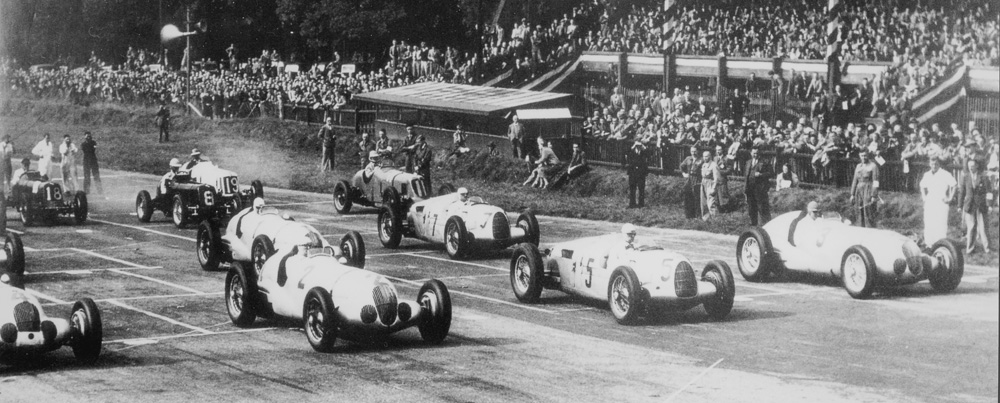
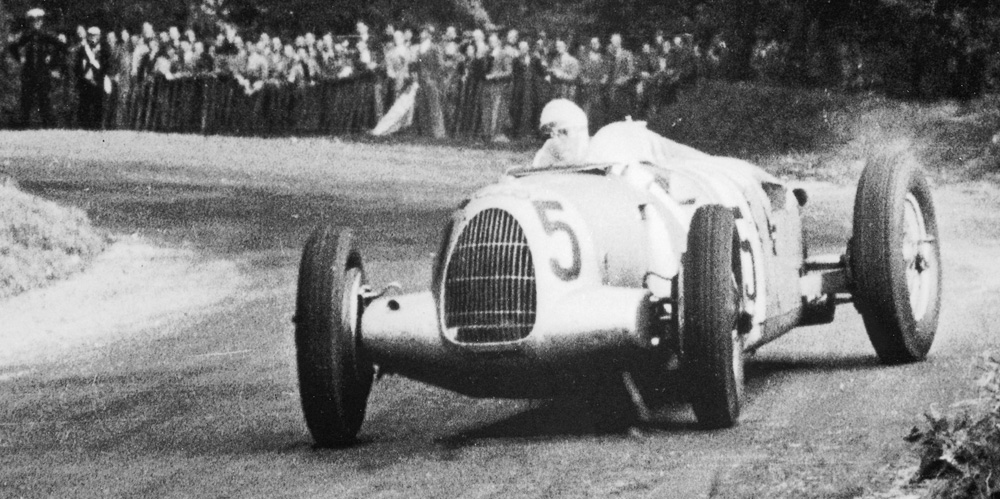

At the end of the 1970, the first rumours were heard to the effect that one of the long lost Auto Union racing cars had been located somewhere in the vast region of the former Soviet Union. Paul Karassik, an American collector of high-class classic vehicles, came to Europe with his wife Barbara, whose family came from Germany, and began to search for the car. As a small boy he had been a spectator in Belgrade at the last Grand Prix held before the Second World War – an unforgettable experience. Later, after emigrating to the USA and becoming a wealthy man, it proved to be useful to him in his search that he came from a White Russian family, had grown up in Serbia and spoke fluent Russian. It took more than ten years and numerous visits to the USSR before he tracked down the remains of two dismantled Auto Union cars in Russia and the Ukraine and, with great negotiating skill, was able to buy them.
This was followed by several hair-raising journeys, often at the wheel of a delivery van, before he was able to bring the parts out through the Iron Curtain to Western Europe. The engines, chassis, axles and gearboxes were then flown to Florida in the USA. In the autumn of 1990, Paul Karassik made initial contact with experts, including in May 1991 the AUDI AG Tradition department, which acted as advisors for the planned restoration. The Karassiks entrusted the rebuilding of their racing cars to the English company Crosthwaite & Gardiner, which already possessed the extensive know-how needed for the restoration of historic racing cars.
After detailed examination of the racing cars’ components, it was decided to rebuild a Type D single-supercharger racing car to 1938 specification, and a Type D racing car in the 1939 version with twin supercharger. In both cases a complete replica body had to be constructed, since no parts of the original bodies had survived. Rod Jolley Coachbuilding built the new bodies in England. In August 1993 the first of the two racing cars, the one rebuilt to 1938 specification, was completed. A year later the twin-supercharger 1939 car was also “ready for roll-out”. With support from Audi, both cars appeared on the starting line for the first time since 1939: at the Eifel Classic at the Nürburgring on October 1, 1994.
In recognition of its support during the rebuilding project, Audi was able to exhibit the 1938 car in the years that followed; it was purchased by AUDI AG in July 1998. The 1939 twin-compressor car returned to Florida. In the spring of 2000, Paul Karassik sold the second car to a private collector: in 1999 he had hoped to see this Auto Union run again in Belgrade, 60 years after the last Grand Prix held there, but the Balkan War put an end to this dream.
Purchase of the Type D twin-supercharger car means that AUDI AG now owns all three Auto Union racing cars recovered from what was formerly the USSR. Thomas Frank, Head of Audi Tradition is delighted: “20 years ago we would never have dreamed that such a thing would be possible!” As well as the two “Karassik cars”, the collection includes the famous hillclimb car driven by Hans Stuck, the Auto Union Type C/D. This was on show at the Car Museum in Riga, Latvia, until just after the demise of the Soviet Union, and is today one of the outstanding exhibits at the Audi museum mobile in Ingolstadt. This is also where Audi plans to display the Auto Union Type D on a long-term basis. But first of all, the new acquisition is to make a notable guest appearance at the Goodwood Revival in England, from September 14 to 16. After 67 years, the latest homecomer from the former Soviet Union will form part of an impressive ensemble together with the Auto Union Type D racing cars first seen in 1994.
These legendary German racing cars began their conquest of the world’s racing circuits in 1934. Until the Second World War broke out in 1939, there were very few events in which the Auto Union and Mercedes-Benz drivers, at the wheel of cars with power outputs of up to 500 horsepower, failed to triumph. These silver-painted cars with their futuristic looks were so far ahead of their rivals that a legend soon developed: the era of the Silver Arrows was born. The names of the drivers – Rudolf Caracciola, Manfred von Brauchitsch, Hermann Lang (Mercedes-Benz) or Bernd Rosemeyer, Hans Stuck and Tazio Nuvolari (Auto Union) will always have an honoured place in the annals of motor racing. Many of the stories and legends associated with these drivers tell of their courage, daring and bravado. And of cars with top speeds equal to those reached in today’s Formula One events, but on roads and racetracks with no safety measures whatsoever. This was the era of the heroic racing driver clad in cotton overalls and with a leather helmet, who risked his life during every minute of the race and, tragically, sometimes lost it.
The Silver Arrows of the 1930s are among the most fascinating and most valuable cars the world has ever seen. Their visual appeal is also impressive. No other cars exhibit advanced technology, abundant power, purist design and elegance in quite the same form. A fascinating aspect of their history: whereas Mercedes-Benz still owns most of its original racing cars, the Silver Arrows built by Auto Union have almost all been lost. As they had been decommissioned in what was to become the Soviet zone of occupation and were discovered by the new occupying power in a mine building near Zwickau, the Auto Union racing cars found themselves in Russian hands after the Second World War. All trace of them was soon lost. A few of the cars were later recovered, but others had to be rebuilt by consulting old photographs and drawings.
In 2009, 75 year anniversary of the Silver Arrows, Audi invited former competitors to participate in this special exhibition, and on this occasion is very glad to welcome three original Mercedes-Benz Silver Arrows: the W 25 eight-cylinder racing car dating from 1934, which Manfred von Brauchitsch drove to victory in the 1934 Eifel race, the W 154 12-cylinder car that won five of its seven races in the 1939 season, and the W 25 12-cylinder car built in 1936 for record-breaking purposes. Rudolf Caracciola, himself holder of three European championship titles, set a new world speed record of 372 km/h in this car.
Seven Silver Arrows bear witness to Auto Union’s Grand Prix racing history; five of them are owned by Audi Tradition. The legendary Auto Union Type C 16-cylinder racing car in which Bernd Rosemeyer took the European championship title, the streamlined Auto Union Type C 16-cylinder car built in 1937, in which Rosemeyer broke through the 400 km/h barrier to set a new world speed record, and the Auto Union Type D 12-cylinder racing car of 1939, the engine of which has twin superchargers – these cars were lost and have been rebuilt as replicas. The 1938 Auto Union Type D 12-cylinder racing car, on the other hand, consists to a large extent of original parts. It was a Silver Arrow of this type in which Tazio Nuvolari won the Grand Prix races in Italy (Monza) and England (Donington). On the other hand the 1939 hillclimb car driven by Hans Stuck, an Auto Union Type C/D with 16-cylinder engine, is entirely original.
Two cars that have a very special place in Auto Union’s history complete this collection from Audi Tradition. The Auto Union Type A 16-cylinder racing car dating from 1934 is from the D’Ieteren collection (Belgium) and is a replica of this, the first Auto Union Silver Arrow. The second car, with an especially noteworthy history, has been made available by a German collector: it is an original Type D with twin-supercharger engine, and was brought back to Germany from Czechoslovakia in the 1970s, though without its engine. The car had survived the war years in the showroom of the Auto Union dealer in Prague. Since then, an original engine has been found for this car. The car has its original body, which provides a clue as to the severe loads these cars had to withstand during races.

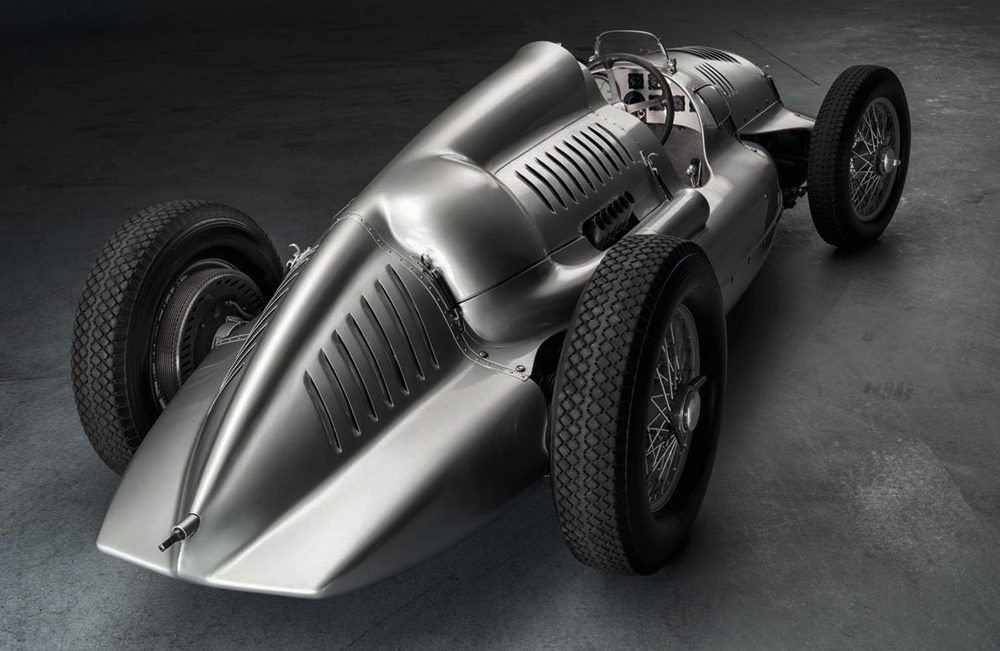

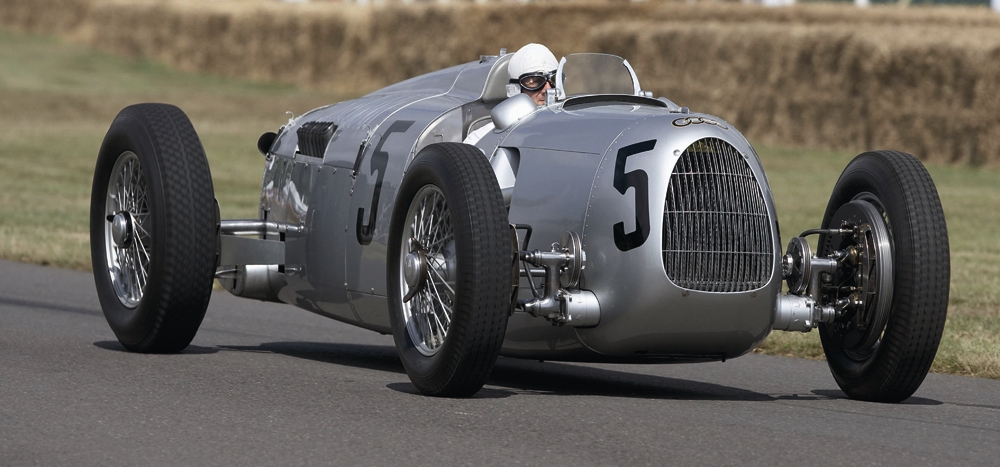
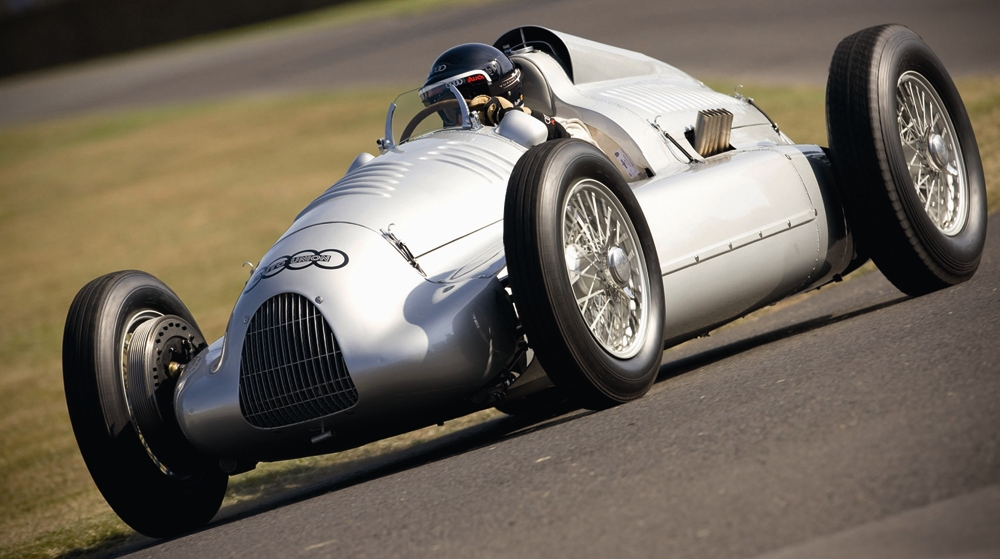
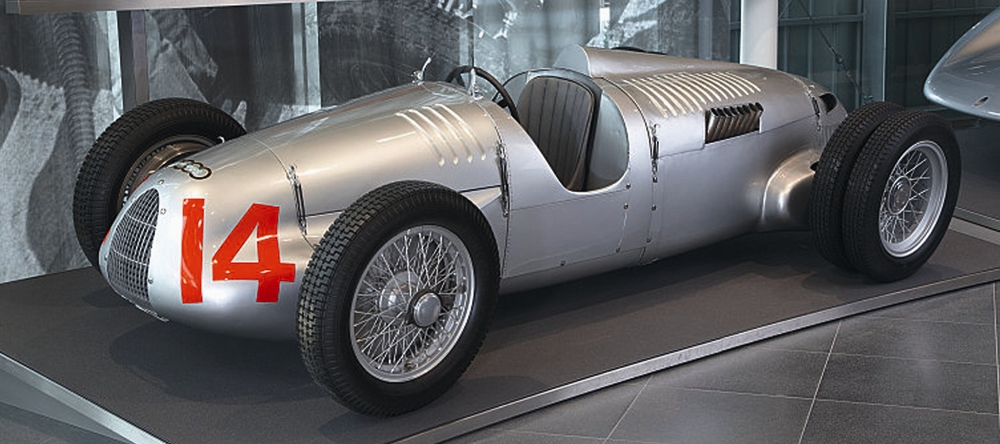


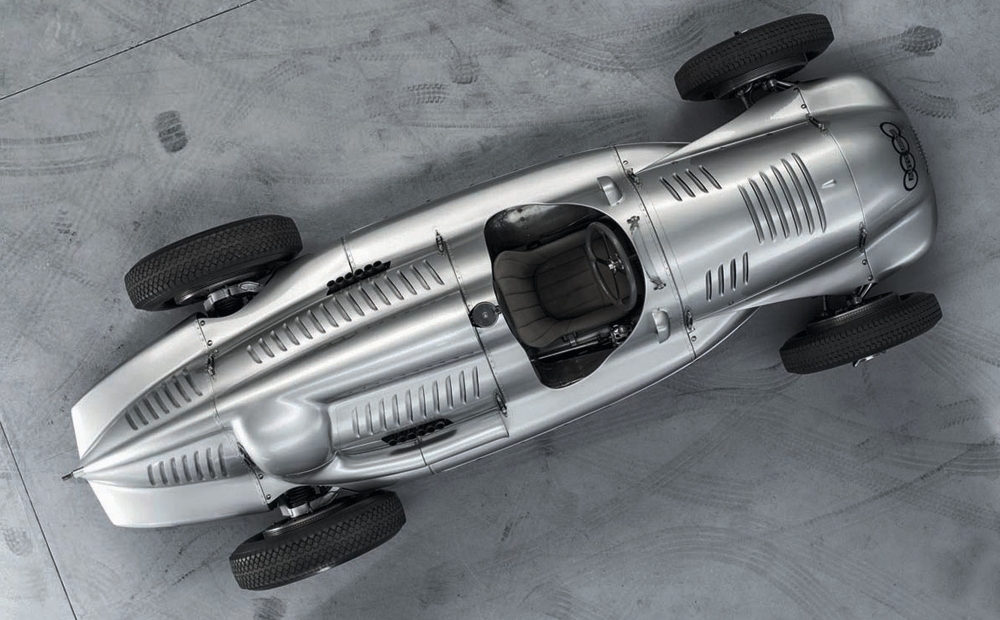

You must be logged in to post a comment.